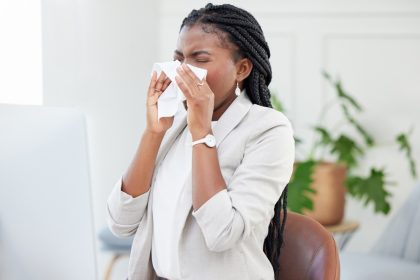Public bathhouses can be relaxing sanctuaries for unwinding, but they also come with risks that need to be taken seriously. These popular venues for relaxation and cleansing can expose you to environments ripe for virus transmission if proper precautions are not taken.
It’s important to understand that public bathhouses are communal spaces that offer shared amenities, from saunas and showers to pools and seating areas. While these facilities promote wellness and relaxation, they can be hotspots for germs and viruses due to the warm, moist conditions that support the survival and spread of pathogens.
Communal showers
When stepping into a public bathhouse, communal showers are usually the first stop for many. While they are meant for pre-bath cleansing, they also represent one of the most common areas where bacteria and viruses can thrive. The combination of warm water, humid air and high foot traffic can lead to an accumulation of microbes on surfaces, particularly floors and walls.
To stay safe:
- Wear shower shoes or flip-flops to minimize direct contact with potentially contaminated surfaces.
- Limit skin exposure to surfaces by standing on a towel or sitting on a clean cloth while drying off.
- Make sure to thoroughly rinse off soap and clean yourself with antibacterial shower gel before and after using the communal shower.
Hot tubs and jacuzzis
The appeal of a hot soak in a jacuzzi is hard to resist, but these areas are particularly prone to becoming a breeding ground for germs and viruses. The combination of heat, water and the possibility of inadequate chemical treatment can allow pathogens to multiply quickly. Hot tubs often carry a higher risk of waterborne infections such as folliculitis, caused by the Pseudomonas bacteria.
To stay safe:
- If the bathhouse does not perform regular maintenance or chemical checks, it’s best to avoid the hot tubs.
- Limit your soaking time to reduce exposure to potentially contaminated water.
- Rinse off immediately after leaving the hot tub and avoid submerging your head to lower the risk of ear and respiratory infections.
Saunas and steam rooms
Saunas and steam rooms are a cornerstone of the bathhouse experience, promoting relaxation and detoxification through sweat. However, the high humidity in these enclosed spaces makes them conducive to the survival and spread of airborne viruses. When people cough or sneeze in these environments, droplets containing viruses can linger in the air and on surfaces, increasing your risk of exposure.
To stay safe:
- Use a towel as a barrier between your body and shared seating to avoid skin contact with potentially contaminated surfaces.
- If possible, choose less crowded times to visit the sauna or steam room to reduce the likelihood of being exposed to droplets from other people.
- Make sure the bathhouse has proper ventilation systems in place to prevent stagnant air circulation.
Locker rooms and changing areas
Locker rooms and changing areas in public bathhouses see a significant amount of traffic and are often warm and moist, making them potential hotspots for germs. The proximity of shared lockers, benches and hooks means personal items like towels, clothes and shoes can come into contact with contaminated surfaces, allowing viruses to spread indirectly.
To stay safe:
- Bring a large plastic bag to separate wet clothing or towels from dry items and to avoid placing them on communal benches or floors.
- Consider using disposable disinfectant wipes on surfaces like benches, locker handles and doorknobs before touching them.
- Make sure to wash your hands thoroughly after changing and before handling any personal items like your phone or wallet.
Swimming pools and plunge pools
While swimming pools are typically chlorinated to kill germs, there is still a risk of contracting a virus, especially if the chemical balance of the pool is not maintained properly. Plunge pools, which are smaller and often used for quick dips, can be even riskier if they are not properly cleaned or maintained, as they may not have the same rigorous water treatment as larger pools.
To stay safe:
- Look for clear water and clean surroundings, as murky or cloudy water can indicate poor maintenance.
- Always shower before and after using the pool to minimize the introduction and transmission of contaminants.
- Avoid swimming if you have any open wounds or cuts, as this can increase the risk of skin infections.
Bathhouses offer a place to relax, rejuvenate and socialize, but they also come with risks that shouldn’t be ignored. By being mindful of the areas that present the greatest risk for virus transmission, you can enjoy your time without compromising your health. Wearing proper footwear, maintaining personal hygiene and being aware of your surroundings are simple yet effective measures to keep you protected.
Remember that it’s always important to trust your instincts — if a bathhouse looks unclean or poorly maintained, it’s best to look for an alternative. Prioritizing your health and well-being is the best way to enjoy the communal experience of a bathhouse safely and comfortably.
By following these tips and being vigilant, you can minimize the risk of catching a virus while enjoying all that public bathhouses have to offer. Stay safe, stay informed and keep your health care routine in mind for a relaxing and worry-free experience.
This story was created using AI technology.











